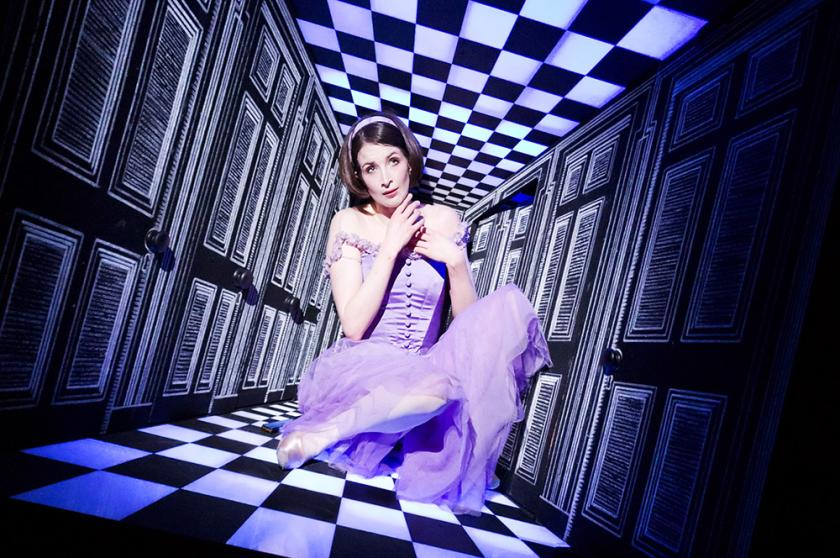I can imagine Monica Mason, the artistic director who commissioned Christopher Wheeldon's 2011 Alice, feeling pretty pleased with herself as she looked around the Covent Garden auditorium last night at an audience buzzing with excitement for the first performance of the new season. At its 2011 premiere the piece was a big step into the unknown, the Royal Ballet's first full-length new work in 16 years. Now on its fifth run, Alice has proved to be the company's most successful new story ballet in a good deal longer than that.
Alice paved the way for a run of new full-length ballets: three more have appeared since its premiere, including The Winter's Tale (2014), which boasted the same core creative team (choreographer Wheeldon, composer Joby Talbot, and designer Bob Crowley). But back in 2011 this success was by no means assured, and that is perhaps some excuse for Alice's extreme tameness compared to recent creations at both the Royal Ballet (like Wayne McGregor's Woolf Works, which riffs impressionistically on the great writer's life and prose), and at English National Ballet (where Akram Khan's searing 2016 Giselle has broken new ground for narrative ballet). Alice, by contrast, is as straightforward as a tin of Cadbury's Roses, and just as pleasing – if you like shiny coloured paper and sugar highs.
The parody Rose Adagio is comedy goldThe design is the standout element, a feast of visual delights and technical wizardry (both digital and analogue). Every audience member will have their own favourite element: the tiny door that scoots around on its own perhaps, or the giant Cheshire cat realised through Japanese puppetry so that its limbs disperse and reassemble in pleasingly loopy ways. I adore the last act's rose garden, with its wizard rose bushes that flip their blooms from red to white, and the trial scene with its utterly brilliant card costumes for the corps de ballet (tutus cut in the shape of the suits and jaunty little number headpieces). There are subtler touches too, which are almost as lovable for what they reveal of the production team's commitment to theatre and attention to detail: the caterpillar's question, "Who...are...you?", projected in astonishly realistic smoky eddies for example, or the perfectly lit, sepia-photograph realistic unreality of the Christchurch buildings in the background of the first scene. I also have a soft spot for the Victorian scrapbook roses and sorbet-coloured costumes of the Garden of the Living Flowers: it may be corny, but you can't deny its showbusiness.
By comparison, the choreography is much less inventive and much less interesting. Wheeldon has original moments, but I find a lot of his work anodyne: he can competently fill a stage with movement to divert the eye, but rarely does one remember much about it afterwards. Alice, in fairness, has a similar problem to The Nutcracker in terms of its single, young girl protagonist. Much of the first act and a half is just Alice exploring Wonderland and encountering her fellow inmates one by one: it offers little opportunity for more than solos, which in ballet are rarely as interesting as larger numbers. However charmingly Lauren Cuthbertson as Alice smiled and tripped her way through her part, a lot of it still felt like filler.
Fresh-faced whimsy can be astonishingly tiring to watchThe choreography only really comes alive with the appearance of the Queen of Hearts, last night danced by Laura Morera, a tough, gutsy and intelligent ballerina who comes from the same mould dramatically (if not physically) as the part's originator, Zenaida Yanowsky. Stalking around the stage, snapping and grinning, Morera keeps the Queen's psychotic society hostess act on the funny side of slapstick, and vastly outclasses the insipid love story between Alice and the Knave of Hearts (Federico Bonelli, doing the decent boyfriend act perfectly). The Queen's parody Rose Adagio is comedy gold, not least because Morera is of a calibre to do the real thing. Honourable mentions to Christopher Saunders, whose pale, lugubrious King of Hearts is a scene-stealer, and to experienced character dancer Bennet Gartside as the hapless Four of Spades who is lucky to escape from his Rose Adagio partnering in one piece.
Joby Talbot's melodic score is the right match for the sugary lightness of the general premise: heavily dominated by celeste, xylophone and harp, it twinkles its way merrily through the magic bits and lusciously through the lush bits, with sly references to Bizet, Tchaikovsky and others to match Wheeldon's frequent homages to his fellow choreographers (MacMillan, Balanchine and Bob Fosse all get nods, as does Petipa).
Alice's selling-point for some – its shiny, expensive desire to please – will be its drawback for others. Fresh-faced whimsy can be astonishingly tiring to watch, and the cynical might well ask whether this elaborate, expensive pantomime is the best possible use of world-class ballet dancers. Will Tuckett could probably have made an equally effective show on a fraction of both the cast and the budget. Nevertheless, there is a place in life, and in Covent Garden, for pure, stage-filling spectacle. If you like yours in the form of 32 white tutus and the classical poetry of Ivanov choreography, Alice will disappoint, but for everyone else, it's an excellent evening at the theatre.
- The Royal Ballet perform Alice's Adventures in Wonderland at the Royal Opera House until 28 October. There is a live cinema broadcast of the performance on Monday 23 October.
- Read more dance reviews on theartsdesk














Add comment